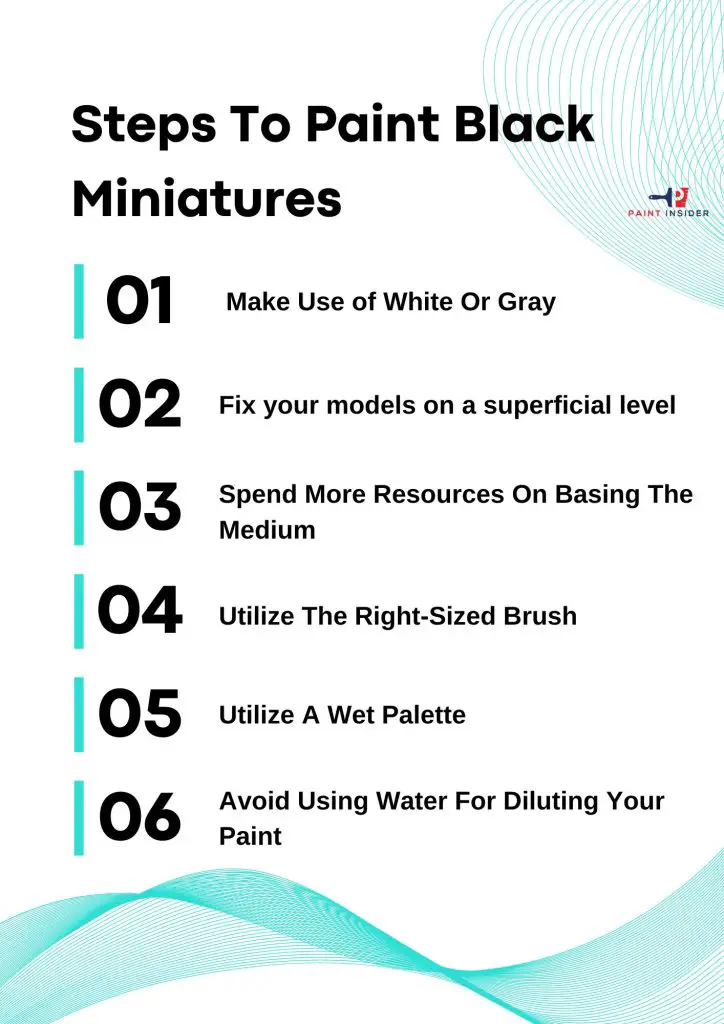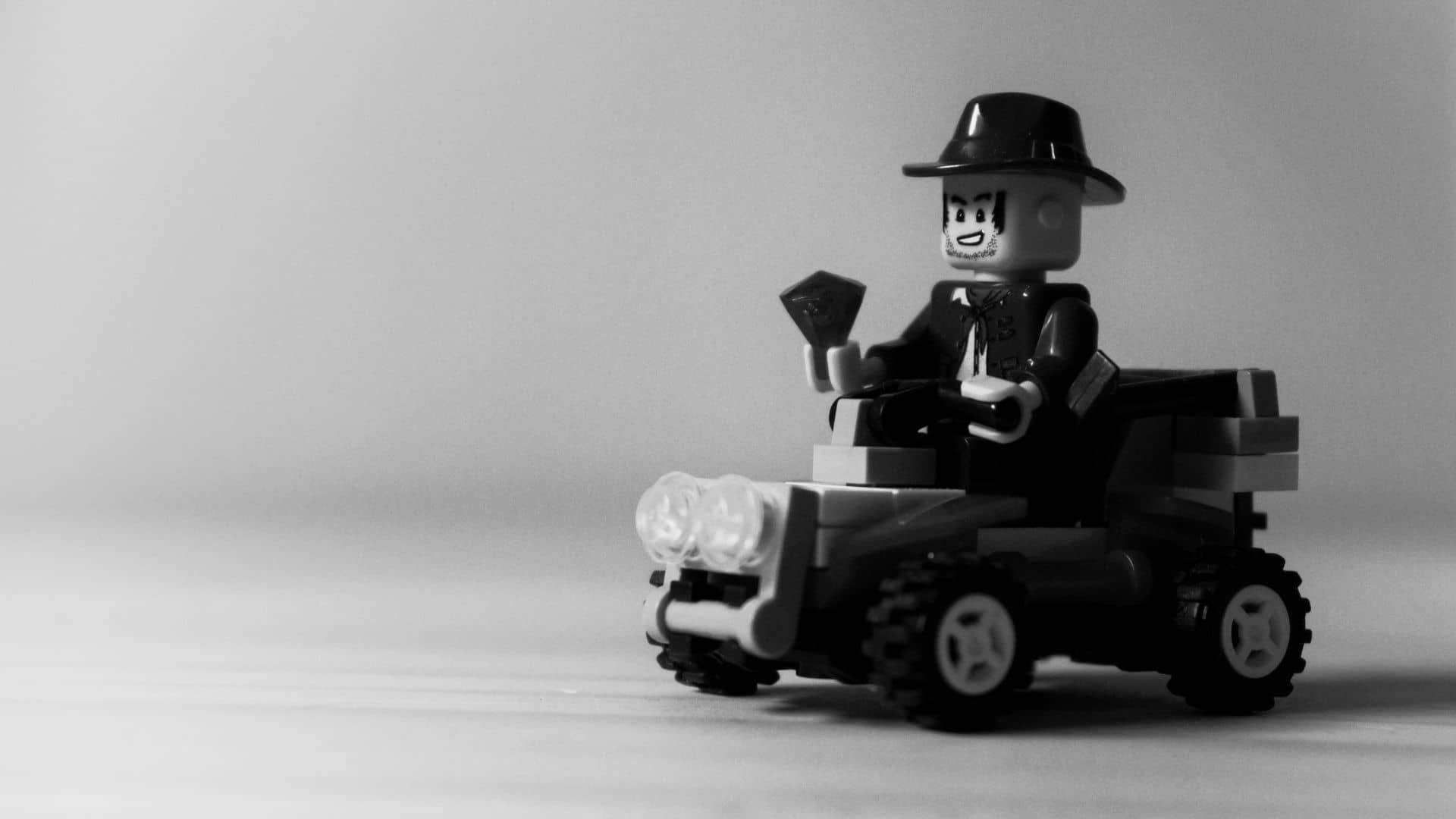Today, I am going to discuss amazing things. Guise what? Yes, it’s all about how to paint black miniatures. Miniature artwork is a customary way of painting. It is characterized by nitty-gritty subjects on little estimated mediums, regularly more modest than 1/sixth of the first size. But, you need the best miniature paint to paint your black miniatures.
Miniature artistic creation follows its underlying foundations back to the Middle Ages as enlightenments, painted to have the smoothest surface. It is guessed that it was affected by the emblems and pendants of Ancient Rome also.
Even though they are most appropriate for individuals who have some involvement with the work of art, you can take in significant exercises from it regardless of the event that you have recently begun.
Introduction: Overview of Black Miniature Painting
Black miniature painting creates a sense of mystery and attracts hobbyists who want striking visual contrasts. Although some avoid this color because they find it complex, mastering black miniatures can lead to unique artistic storytelling. Black is not just the absence of color; it provides a rich base for shading and highlighting that can add life even in dark tones.
To paint black miniatures well, you need to understand light and shadow. Techniques like dry brushing or layering colors can reveal hidden details. Adding subtle shades of gray or other colors can enhance texture and draw viewers in. Ultimately, painting black miniatures challenges artists to understand contrast better and explore creative ways to turn a difficult task into a rewarding experience.
Choosing the Right Black Paint
When it comes to choosing the right black paint for your miniatures, it’s essential to consider the finish and tone that best suits your artistic vision. Different brands offer a variety of blacks, from matte to glossy, each affecting how light interacts with your piece. For instance, a satin finish can create depth and highlight intricate details without being overly reflective, while pure matte black can lend an air of mystery and drama to your miniature.
Moreover, the texture of your paint plays a crucial role in achieving desired effects. Some paints are thicker or have more pigment than others, allowing for smoother applications or better coverage in fewer coats. Experimenting with thin washes or layering techniques can elevate the visual appeal. Think about mixing in dark grays or deep blues into your black to add richness and complexity. By approaching black not just as a color but as an opportunity for exploration, you’ll find that even simple choices can lead to captivating results in your painting journey.
Preparing Your Miniatures for Painting
Before diving into the painting process, it’s crucial to prepare your miniatures meticulously. Start by washing them in warm, soapy water to remove any residues from manufacturing that could hinder paint adhesion. This step may seem minor, but it helps ensure that your colors pop and create a smooth finish. After washing, dry the figures thoroughly with a soft cloth or let them air dry before moving on to priming.
Priming is an essential step in painting black miniatures effectively. Use a high-quality primer suitable for plastic or metal surfaces, depending on your mini’s material. A black or grey primer can provide an ideal base for darker color schemes, enhancing depth and shading when you apply subsequent layers. Always apply thin coats of primer spray from about 12 inches away to avoid obscuring detail while ensuring even coverage is achieved; this simple technique will transform how the paint adheres and looks once applied. Don’t overlook this stage proper preparation sets the foundation for your miniature masterpiece!
Steps To Paint Black Miniatures
This article will take you through a couple of guidelines on how to paint a black miniature like a pro. Read on to discover more.

1. Make Use of White Or Gray
Practically speaking, you will discover that the subtleties are simpler to select in the white foundation. Generally, the little things in the image are more articulated.
In the wake of giving a hand to white/dark/earthy colored, give your ability a shot by taking action with the shading which will be the essential basecoat in your artwork. From that point, you can prime it with whatever shading you need!
2. Fix your models on a superficial level
Throughout the whole exercise, you will encounter setbacks, one such instance is the toppling of the models when you are painting them. Another problem is when your fingers leave blemishes on the newly painted surface that stays.
On the off chance that you are wiped out about this and searching for an exit plan, there is a basic, yet powerful, answer for this. Fix your models on a superficial level by utilizing tacky tape or other material that can tie it for now as long as you are finished with splashing. This outcome in two positive things:
3. Spend More Resources On Basing The Medium
This will put on a show of being an odd tip yet this is advantageous to your work straightforwardly since you do it right. If you study your little armed force from a proficiency viewpoint, what components require your most time? Decide properly on Which of the complements are likely to count for the demanding exercise.
If you can review, have you at any point seen a genuinely amazing armed force on awful bases? It is impossible that the appropriate response could be yes. Work your way around the bases to endure a clean finish.
4. Utilize The Right-Sized Brush
On the off chance that you are a lethargic painter, you spend a lot of time enumerating the photos. There are solid possibilities that your artwork won’t ever get wrapped up. The vast majority of the sluggish painters utilize the point-by-point brush for pretty much every part of the drawing.
There is an analysis that you can direct on shading a base. Check how large a brush you can use to shade the base coat, not the whole base coat but rather the enormous zones, like the chest, back, legs, and other open territories.
You will need to examine the painting to see if there is any difference. There are a few zones that you would prefer not to paint, yet you will do it in any case. Note that having the right instruments at your disposal will save you valuable time.
Put some time into learning the shading hypothesis. You can forestall various missteps and useless hours later by investing some energy in the blend. Research and develop yourself as a painter as you go.
5. Utilize A Wet Palette
From the images of mainstream society to the lessons of the best experts, we know one changeless law of the composition – utilizing a dry range is just about as terrible as painting goes.
In any case, even in the wake of knowing the significance of a wet range, numerous individuals are reluctant to use it for painting. The little venture will give you much consistency in the canvas. Joined for certain other down-to-earth tips, you can get significantly more from your paint than you were getting as of now.
6. Avoid Using Water For Diluting Your Paint
There is a ton that you can get from simply diminishing your paints right. If you are as yet getting up to speed with how to do it the ideal way, this tip will abbreviate the significant distance and get you tuned in at all conceivable times.
Using water to remove miniature paint is the most convenient and safe way. Yet, it would be advantageous for your work to desert water as your go-to weakening specialist. It is difficult to release things, yet you need to do so by picking the things that will increase the value of your work and endeavors.
Dark is a troublesome tone to paint as you can’t conceal dark – there could be no hazier paint. Therefore it tends to be level and dead or, if over-featured, it can wind up looking dim. Due to this, you ought to try not to utilize dark as a mid-tone. Rather blend Chaos Black (or whatever another brand of paints you are utilizing) with at least one different tone to get a dim base coat that seems, by all accounts, to be dark to the eye yet can, in any case, be concealed with dark paint.
Conclusion:
Like any artistic work, you need to contribute the energy, stick to the rules, and break them when you become familiar with them unnecessarily.
The workmanship is an outpouring of inward character and it will stay along these lines, paying little mind to the medium. More modest than regular show-stoppers gain some long experiences coming is at this point squeezing ahead in the bleeding edge world.
If you need to improve at painting, you need to find the vital ways to rule the key and a while later cover the extra mile to stay over the gathering. Using the above-made tips, you will improve as a mature painter with the movement of time

